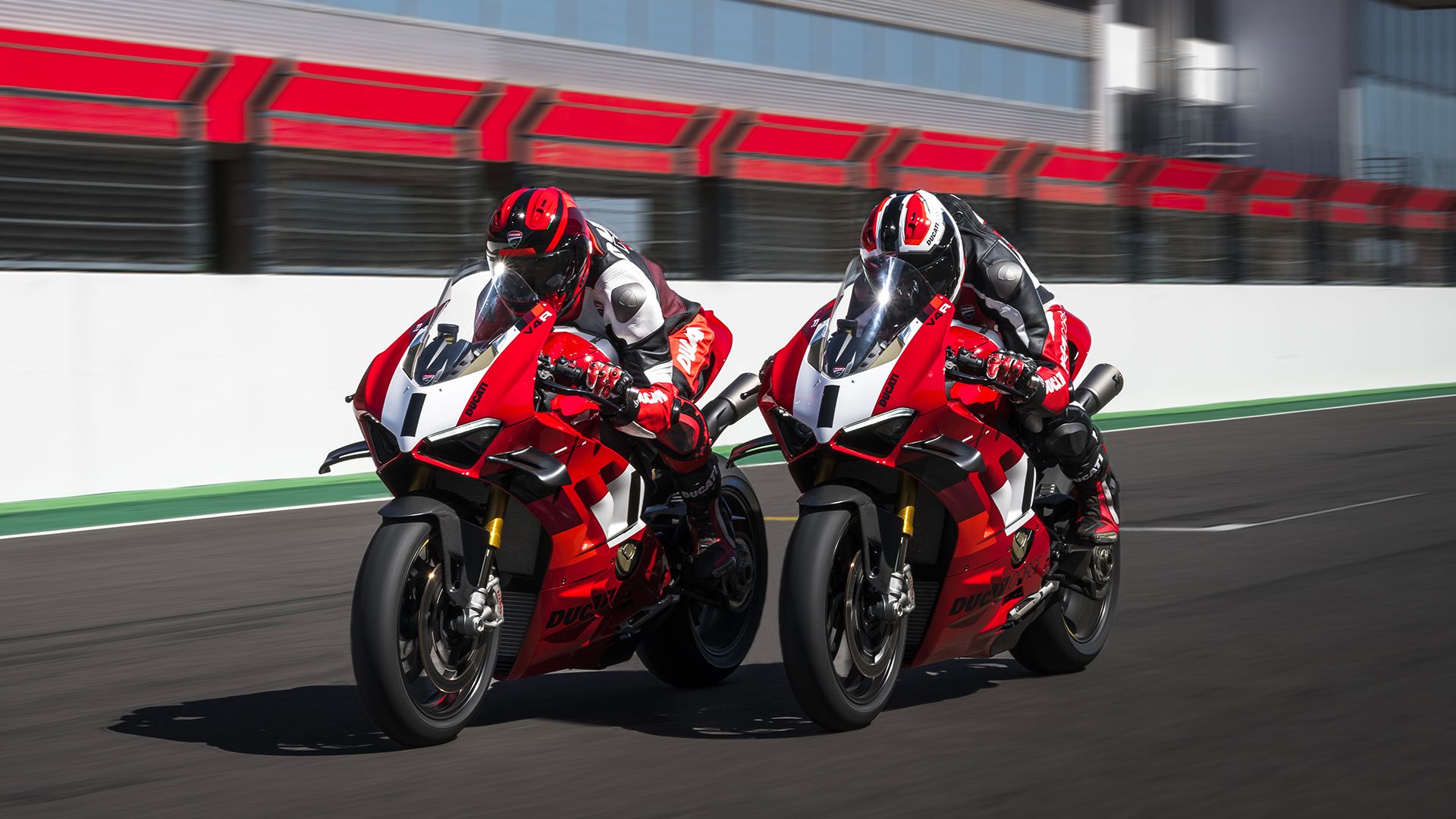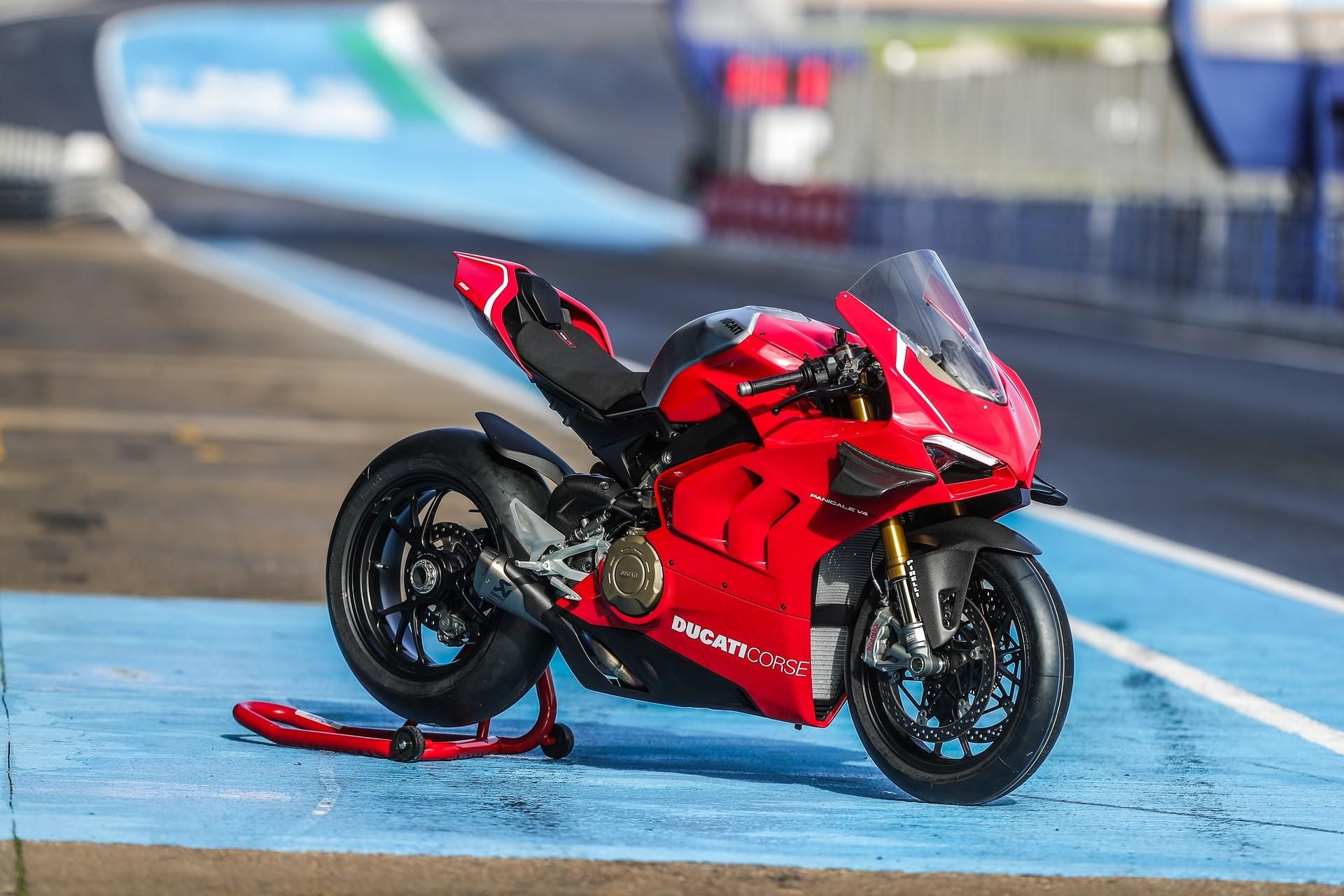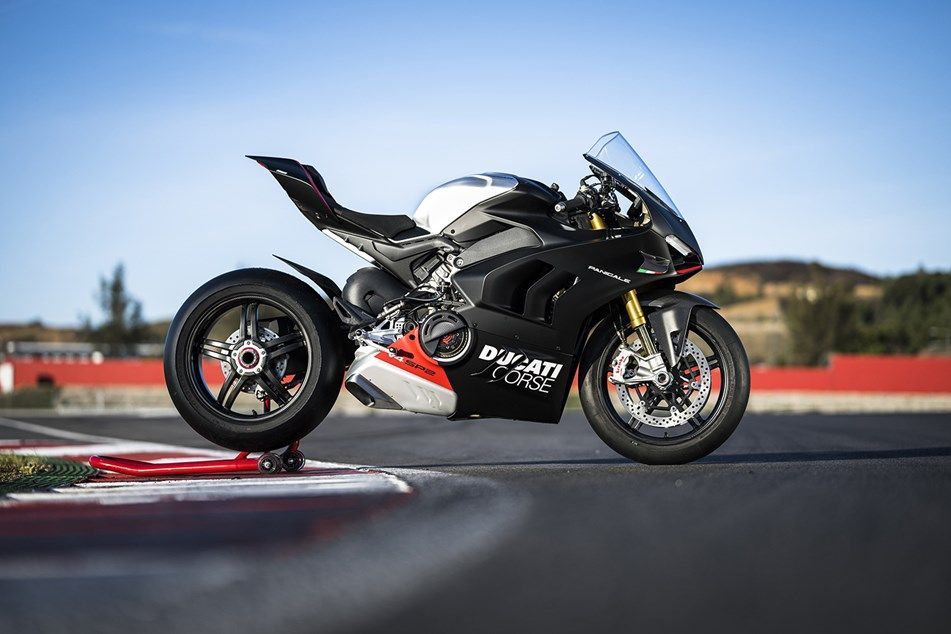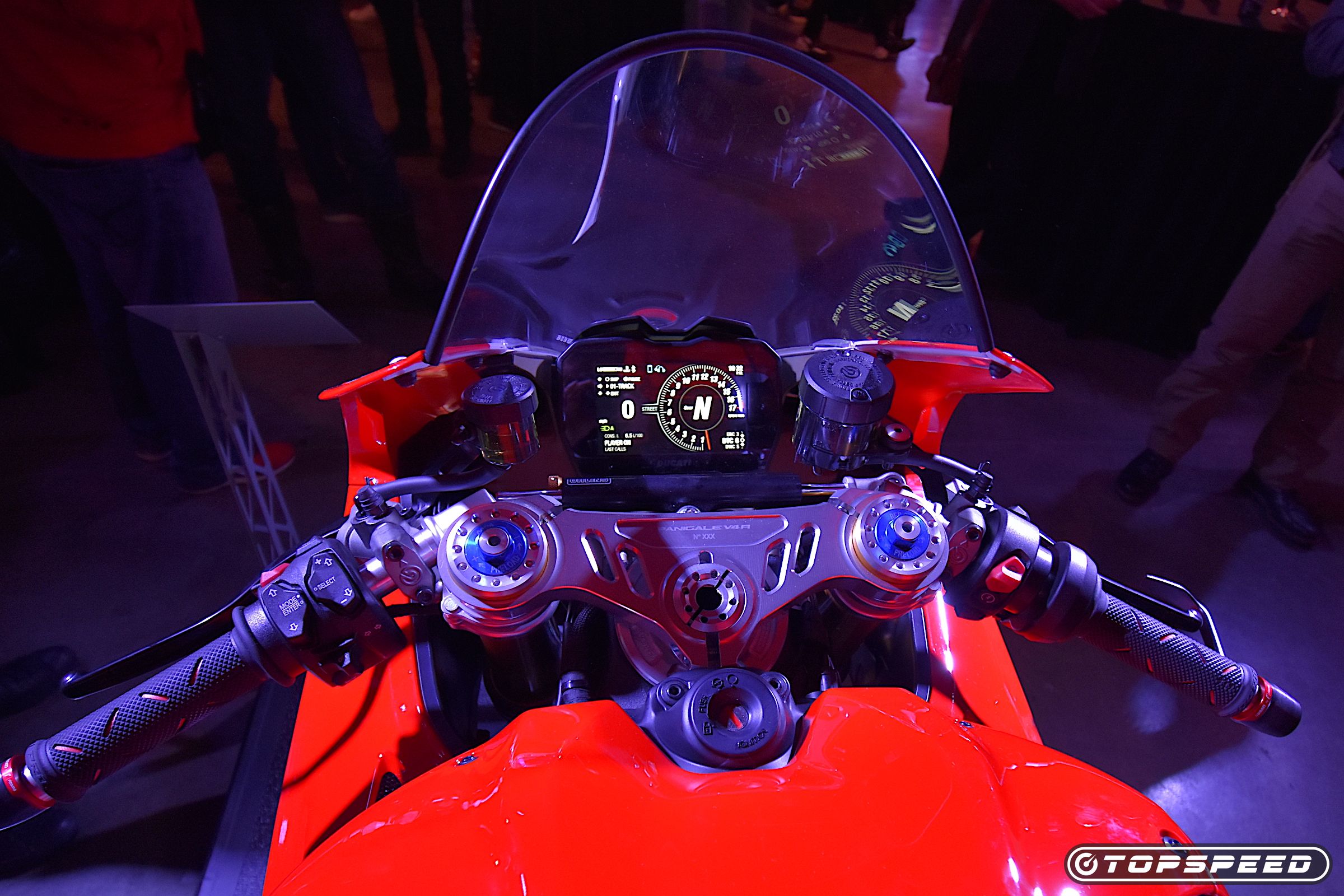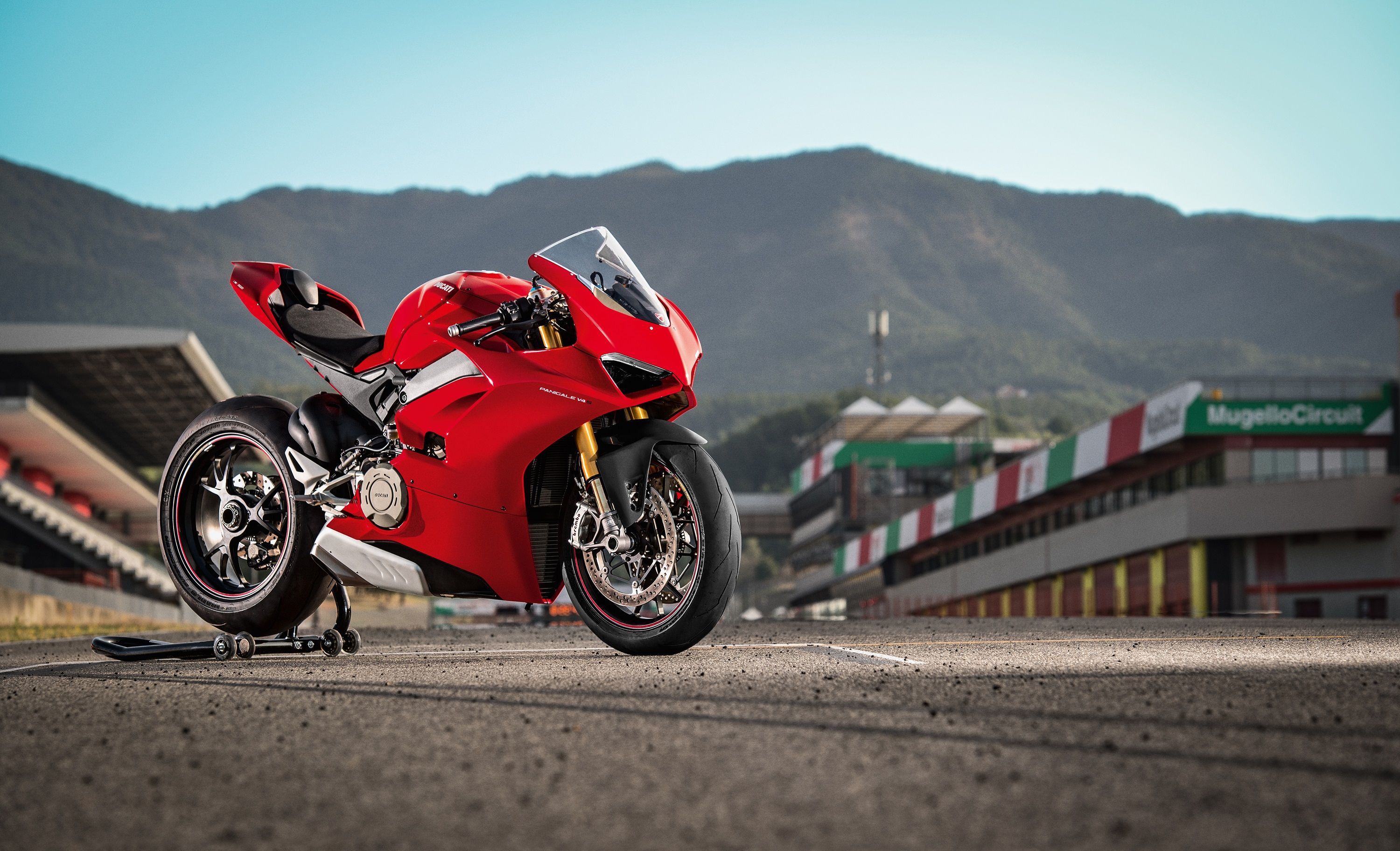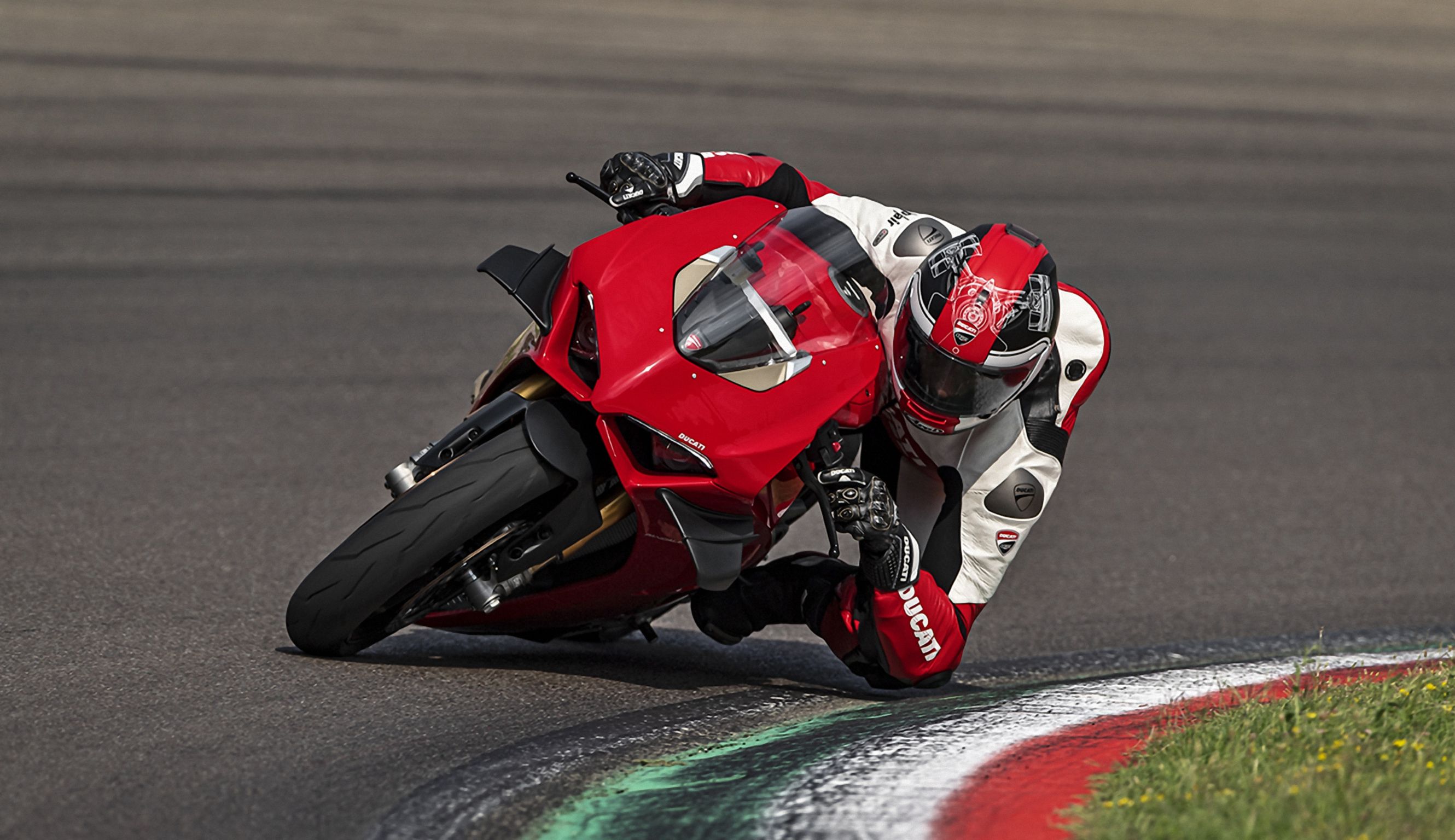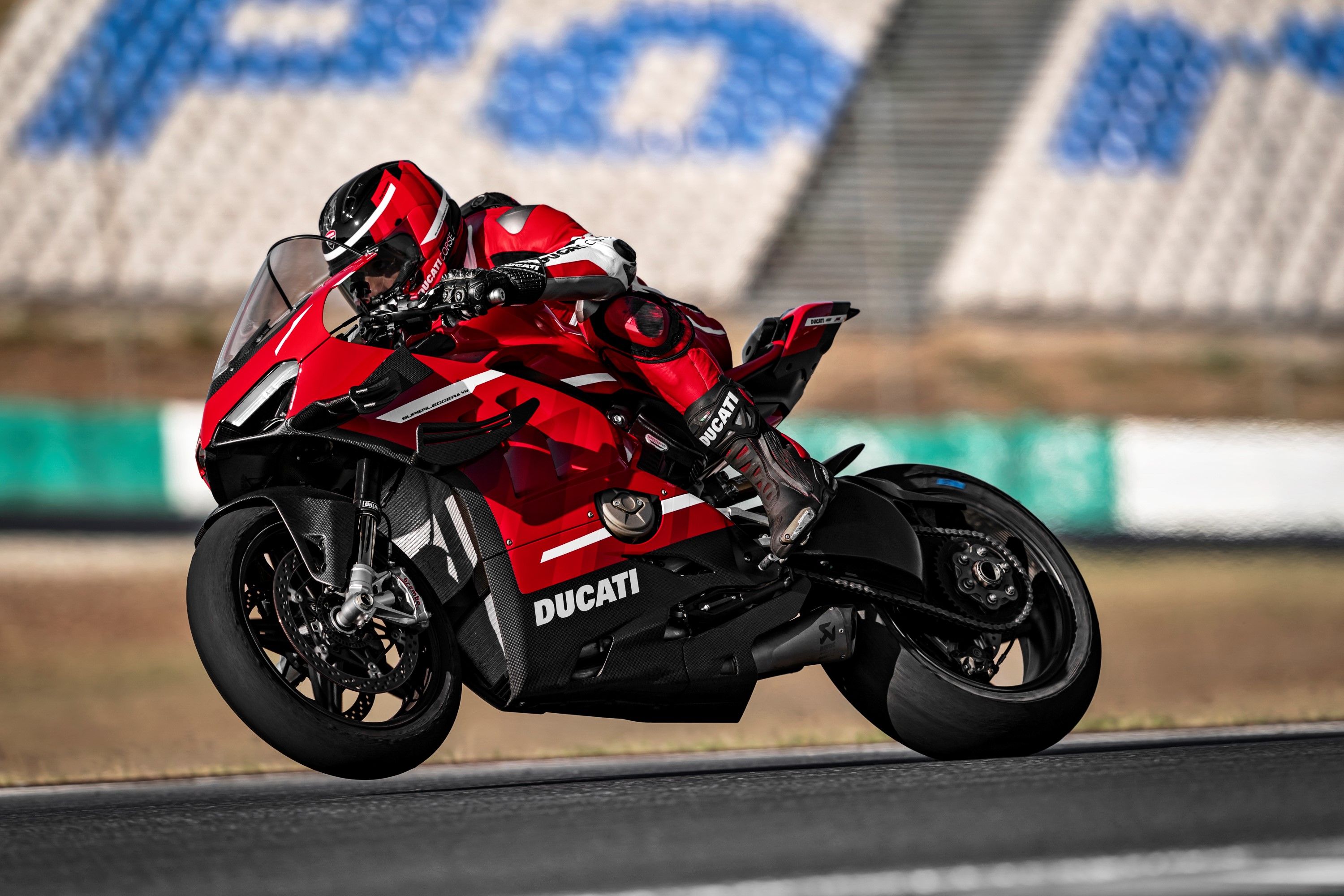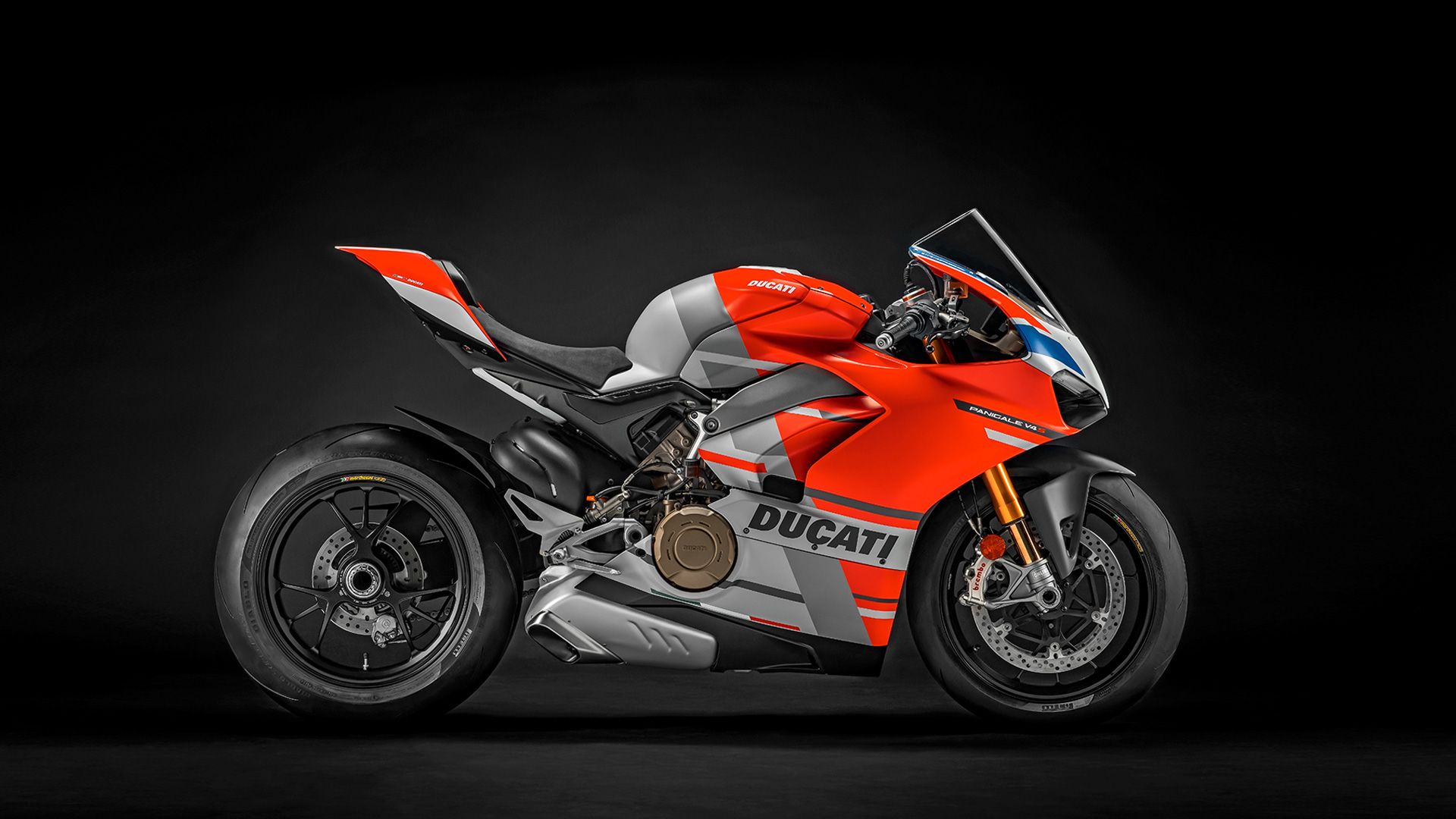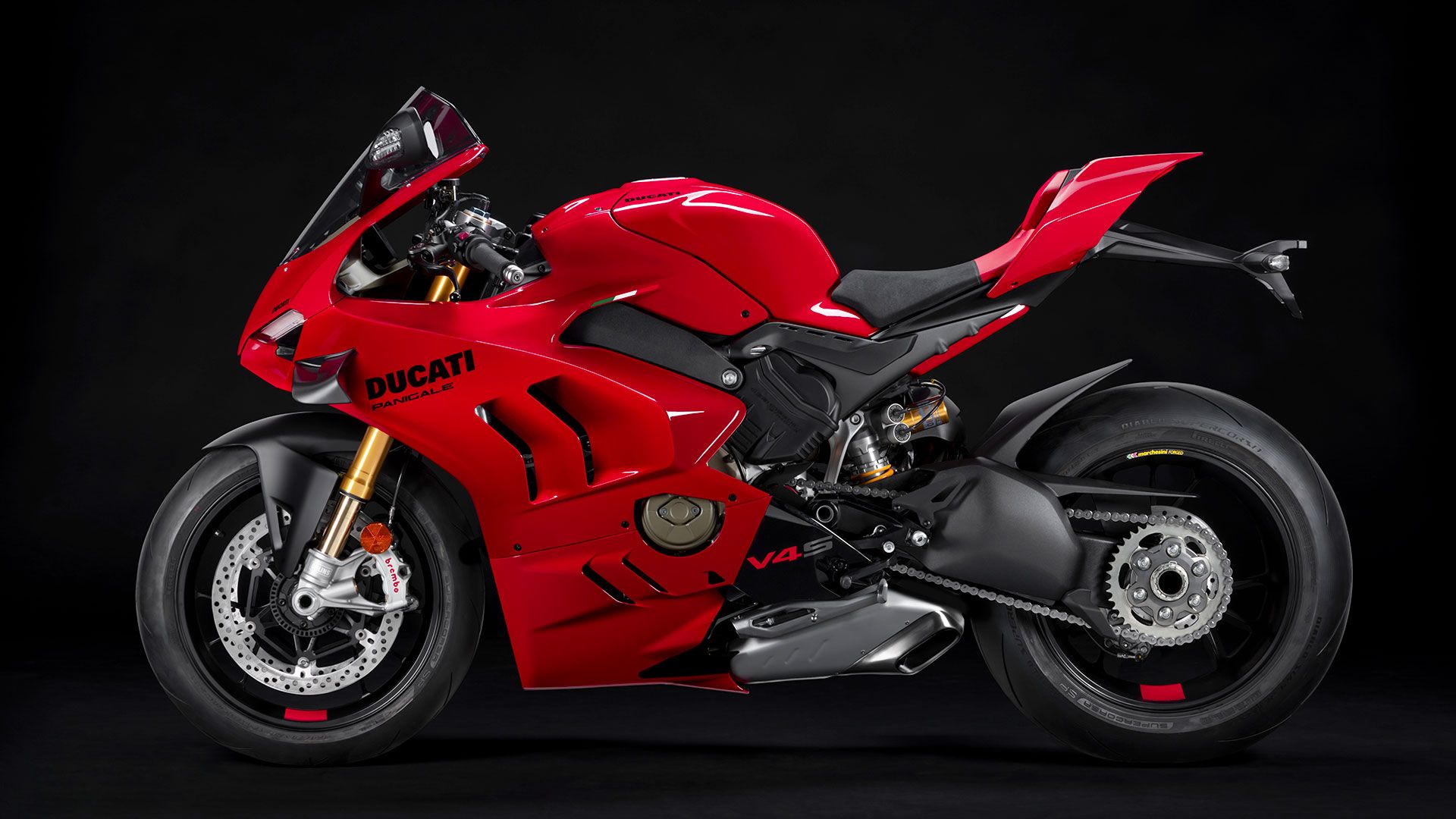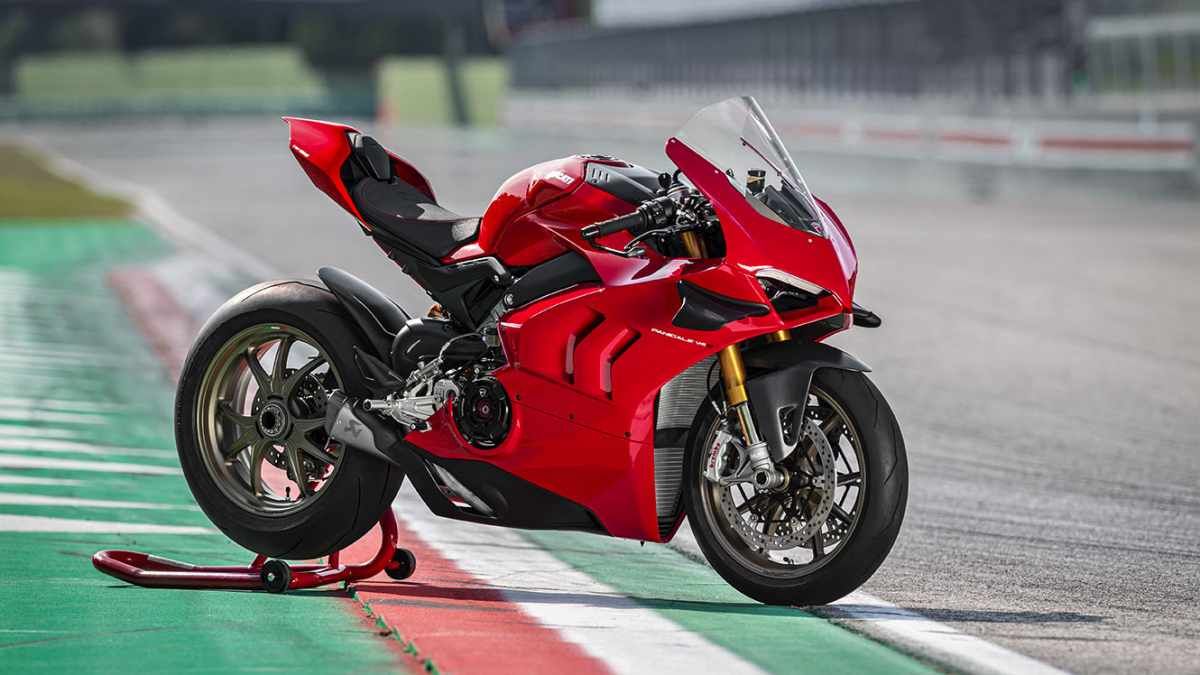The Ducati V-Twin (or L-Twin, if you want to be pedantic) engine must go down in history as one of the great motorcycle engines, powering every Ducati since 1971 and becoming a defining element of the motorcycles from Bologna. By the time of the 1299 Panigale, however, the development potential of the engine was coming to an end, and a decision was made to build a V4 as a replacement. While this may have alienated some customers, there can be no doubt that it has given the Ducati Panigale a new lease on life and provided a link to the Ducati race bikes raced in both MotoGP and World Superbikes.
10 The Ducati Panigale V4 Has A Rich Heritage
Because they all share the same engine, you could argue that the Ducati sports bike, right up to the 1299 Panigale, shares the same DNA and lineage as the very first 750 GT: the basic architecture has remained the same, even if there have been many detail changes. More recently, the modern Ducati sports bike arguably started with the 851 of 1987 and continued through the 888, 916, 996, 998, 999, 1098, 1099, 1199, and 1299. If the Panigale V4 has a different engine, then it can still trace its ancestry right back to the 750GT model, even if it has more in common with the 1299 Panigale. It’s not Ducati’s first V4 road bike engine, that honor going to the 1964 Apollo V4, although that never went into production.
9 Ducati Panigale V4: Take A Bow, V4 Engine
Introduced in 2018, the 1103cc V4 Ducati engine is a work of art, both internally and externally. Incredibly, it is barely any larger physically than the V-Twin engine it replaces in Ducati’s top-of-the-range models (it is also used in the Multistrada V4 and the V4 Streetfighter), while retaining the 90° V-angle. In base form, it produces a huge 215.5 horsepower at 13,000rpm and 91 pound-feet of torque at 9,500rpm. With World Superbike racing being such an important marketing tool for Ducati, a 998cc version had to be built to conform to the regulations, and this engine is available to buy for the road in the form of the V4R model which, with the optional race kit fitted, produces 237 horsepower. In both engines, the crankshaft rotates counter to the wheel rotation and, interestingly, the engine isn’t a structural member of the frame.
8 Bewildering Electronics With Fine-Tuning
Absolutely everything on the Panigale V4 is the very best that has ever been fitted to a sports bike from any manufacturer, and that, naturally, includes the electronics which are nothing short of bewildering, which they have to be to contain all that power and prevent the rider from being launched into orbit as soon as he opens the throttle. Controlled by the six-axis IMU, there are three levels of cornering ABS, eight levels of traction control, eight levels of wheelie control, two levels of rear wheel slide control, three levels of engine braking control, and three levels of launch control. With four preset power Modes and four customizable rider modes, it is possible to fine-tune the bike’s behavior to an incredible degree including an individual torque map for each gear! It makes you wonder if the bike actually needs a rider!
7 The Ducati Panigale V4 Has Semi-Active Suspension
The top-shelf specification continues, naturally, to the suspension. Ohlins has not only supplied its NPX25/30 forks and TTX36 rear shock but also its semi-active suspension technology, which adjusts damping on a millisecond-by-millisecond basis, giving a most un-sports bike-like ride, full of suppleness and control whether accelerating, braking, or cornering. The electronic adjustment extends to the suspension, with the rider being able to dial in different levels of support for both cornering and braking, depending on individual rider preferences or track condition.
6 Near-MotoGP Quality Brembo Brakes
If you’re still not convinced why the Panigale V4 costs as much as it does, then keep on reading. The brakes are, naturally, Brembo Stylema calipers, which aren’t far off MotoGP quality. In the front, the discs are huge 330mm dinner plates and, in the rear, the single disc is 220mm. Braking power is huge, but control and modulation at the lever are uncanny: there is definitely the opportunity to trail-brake deep and late into a corner without causing the ABS to chime in.
5 The Ducati Panigale V4's Aerodynamics Are Ridiculously Good
There is no race bike worth its salt these days that was not designed in a wind tunnel to develop downforce-inducing aerodynamic appendages to the fairings in an effort to combat front-end lift when accelerating and increased stability when braking. In MotoGP, Ducati has proved to be the master of this science, and it has trickled down to production road bikes remarkably quickly. The winglets on the 2023 Panigale V4 are smaller than before but offer a similar 81 pounds of downforce at 186mph. You’ll have to be familiar with how a motorcycle feels at such speeds but, for those who are, the poise and stability the aero gives is remarkable and confidence-inspiring. Airflow to the oil cooler has been considered, and even the quickshifter has a dedicated vent, while the rider has not been forgotten, with as much hot air as possible vented away.
4 The Ducati Panigale V4 Is Relatively Comfortable To Ride
Ah, you will be saying, but with this much power and performance, the riding position will have to be so extreme as to be only accessible to a small percentage of riders. Normally, you’d be right, and your knees would be up by your elbows and all your weight on your wrists. Actually, if we’re honest, you’re still right: despite Ducati claiming they’ve made the Panigale V4 as comfortable as possible, it’s all relative, and you still need to be a double-jointed, five-foot-six, 150-pound jockey if you want to fit onto it properly without needing a trip to the osteopath after every ride. Having said that, the Panigale V4 is a whole lot more comfortable than the Yamaha YZF-R1 which was designed by Medieval torture artists to cause maximum pain and discomfort. By those standards, the Panigale V4 is a comfy chair.
3 A Demonic Exhaust Note You Can't Escape
There are many who will lament the gradual decline of the immortal V-Twin Ducati engine, most likely because they will miss that unmistakable bellow that was such a characteristic of the layout. It is a song we have all come to know and love for many decades, but that’s not to say that the V4 isn’t as distinctive in its own way. The mufflers are still tucked away underneath the engine, exiting in front of the rear wheel, and the noise can only be described as Demonic, with a fantastic bass note reminding you that this is still a Ducati. On the V4R, a full-titanium exhaust system is an option, with twin ‘mufflers’ exiting under the seat, giving an even more astonishing noise that really sets the hair standing on end.
2 Four Faces Of The Ducati Panigale V4
What would a Ducati sports bike be without several versions to choose from? First up is the base V4, with 215 horsepower and 91.2 pound-feet of torque, non-semi-active suspension, and milder electronics. The V4S adds the semi-active Ohlins suspension and lighter forged aluminum Marchesini wheels. The V4SP2 has carbon wheels, Brembo Stylema R brake calipers, and adjustable foot pegs. The V4R is the World Superbike homologation special and has a 998cc version of the V4 engine, along with manually adjustable suspension, which is deemed more appropriate for race bikes. With the optional race exhaust from Akrapovic, power output on the V4R is approaching 240 horsepower! Complete insanity!
1 Ducati Panigale V4 Rivals and Price
Ducati would have you think there are no real rivals to the Panigale V4, but there are three that deserve mention. First up is the Yamaha R1M ($26,999), which has a carbon fiber fairing, ‘only’ 197 horsepower, and weighs 450 pounds. Then there is the Honda CBR1000RR-R Fireblade SP which has 215 horsepower , weighs in at 443 pounds, and costs $36,011. At one point, there was the BMW HP4 Race with its full-carbon chassis and 215 horsepower powering a 376-pound all-in weight! It was only built in 2017 as a limited edition model. Compared to those, the Ducati Panigale V4 (base) costs $23.295, the V4S will cost you $29,995, the V4SP2 costs $39,500, and the V4R costs $44,995.

